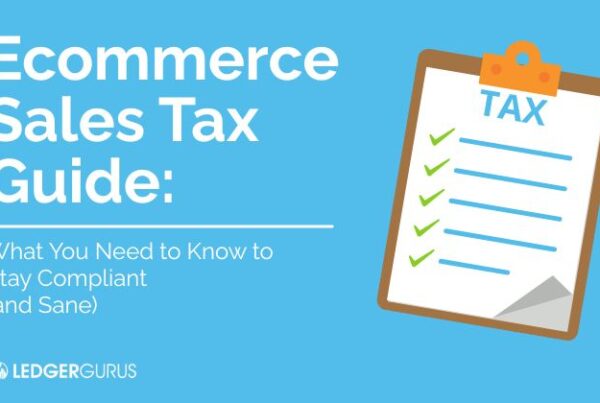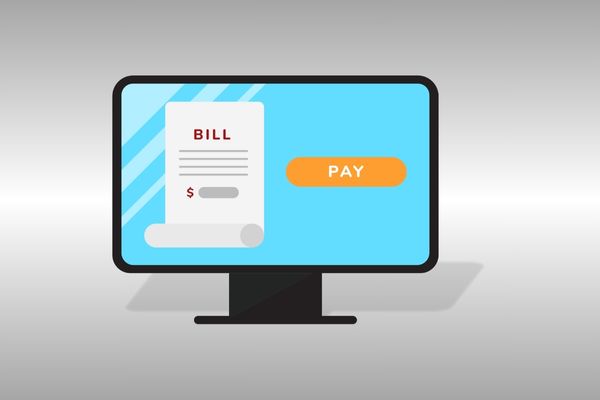
Estimated reading time: 3 minutes
Collecting and remitting sales tax is a big pain point for businesses that have to deal with it. This blog focuses on how sales tax funds move through your business and what the associated sales tax journal entry should look like at each stage.
Key Takeaways
- The most common sales tax mistake: Many businesses incorrectly record sales tax as income or expense. Remember, sales tax is a liability, not revenue or cost.
- Stages of sales tax accounting: Sales tax moves through three accounting stages—collection, holding, and remittance—each with a specific journal entry to track it as a liability.
- Avoid cash flow issues: Keep collected sales tax in a separate account to ensure funds are available when it’s time to remit to the state.
- Compliance beyond journal entries: Proper journal entries are just part of compliance. Knowing where you owe sales tax and setting up systems to collect accurately is key, especially for ecommerce businesses.
Table of Contents
- The most common sales tax mistake businesses make
- The stages of accounting in sales tax
- Sales tax compliance is more than just journal entries
The Most Common Sales Tax Mistake Business Make
The most common mistake we see businesses make is to record sales tax as income when they collect it (either individually as sales tax income, or grouped into the money they collected on the sale), and then as sales tax expense when it’s paid out.
Keep in mind that sales tax is neither income nor an expense to your business.
You are collecting sales tax on behalf of someone else, the state. When you collect sales tax, you are now holding money that doesn’t belong to you, which is why you should record it as a liability when you collect it.
When you send it on to the state you are relieving yourself of the liability on your books.
You should never see sales tax on an income statement! Sales tax should always be shown as a liability on the balance sheet, increasing and decreasing as you collect and remit.
To show you what this should look like, as well as to see other common mistakes we often see ecommerce businesses make, download our 5 Signs of Bookkeeping Trouble.
The Stages of Accounting in Sales Tax
There are different phases along the sales collection and remittance path. You want to be sure you’re recording them properly so you know you’ve remitted everything you’ve collected.
Stage 1: Sales Tax Collection, and the Associated Journal Entry
When you collect sales tax from a customer, you now have a liability to the state for those collected funds. The journal entry for the collection of sales tax looks like this:
| Debit | Credit | Account | |
|
Cash |
$XXX | Asset | |
|
Sales Tax Liability |
$XXX | Liability |
We recommend a couple of things with this journal entry:
- Record a sales tax liability for each state
- Make this journal entry at month-end by referring to sales tax reports from your POS systems and online sales channels
Stage 2: Waiting to Remit Sales Tax to the States
You will have sales tax funds sitting in your business between the collection of sales tax funds from customers, and the remittance of sales tax funds to the states.
This stage is important to note, because some companies forget about their sales tax liabilities.
They see cash sitting in their bank account and use that cash to grow their business. Then when sales tax funds are due to the states, they come to find that they don’t have the cash to pay…yeah, not the situation you want to be in.
To avoid this scenario, we recommend keeping collected sales tax funds in a separate bank account. Then, you’ll use the funds from this account to remit taxes to the states.
Stage 3: Sales Tax Remittance, and the Associated Journal Entry
You will owe sales tax monthly, quarterly, or annually. The frequency depends on each state and the amount of sales tax you owe.
When you pay your sales tax liabilities (using the funds set aside in a bank account used solely for sales tax funds), here is the associated journal entry:
| Debit | Credit | Account | |
|
Cash |
$XXX | Asset | |
|
Sales Tax Liability |
$XXX | Liability |
Sales Tax Compliance is More than Just Journal Entries
Recording these journal entries correctly is just one step in the process of sales tax compliance.
Additional steps include:
- Understanding in what states you owe sales tax (nexus)
- Setting up your POS systems and sales channels to collect sales tax.
If you are an ecommerce company, you face an even more complex step-by-step process for sales tax compliance that can destroy some businesses when executed poorly.
For help, download our free guide for ecommerce sales tax compliance.
Getting Help with Your Sales Tax is Simple
If managing sales tax is feeling overwhelming, let us handle it for you.
From accurate journal entries to full compliance across all states, our team at LedgerGurus specializes in taking the hassle out of sales tax for ecommerce businesses.
Whether you need support setting up your systems, ensuring compliance, or managing remittances, we’ve got you covered.
Contact us today to see how our services can streamline your sales tax process and keep your business compliant—so you can focus on what you do best.







